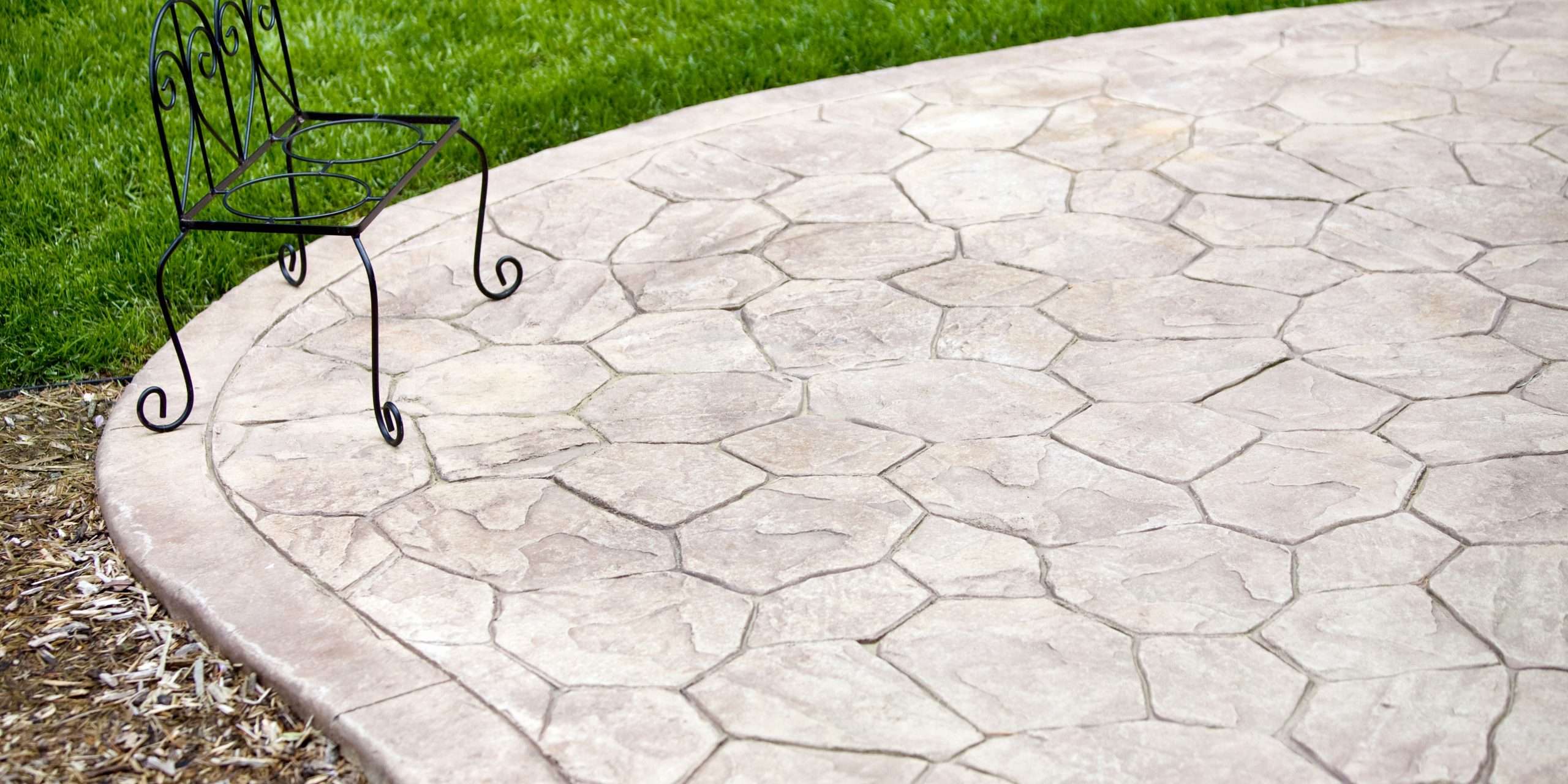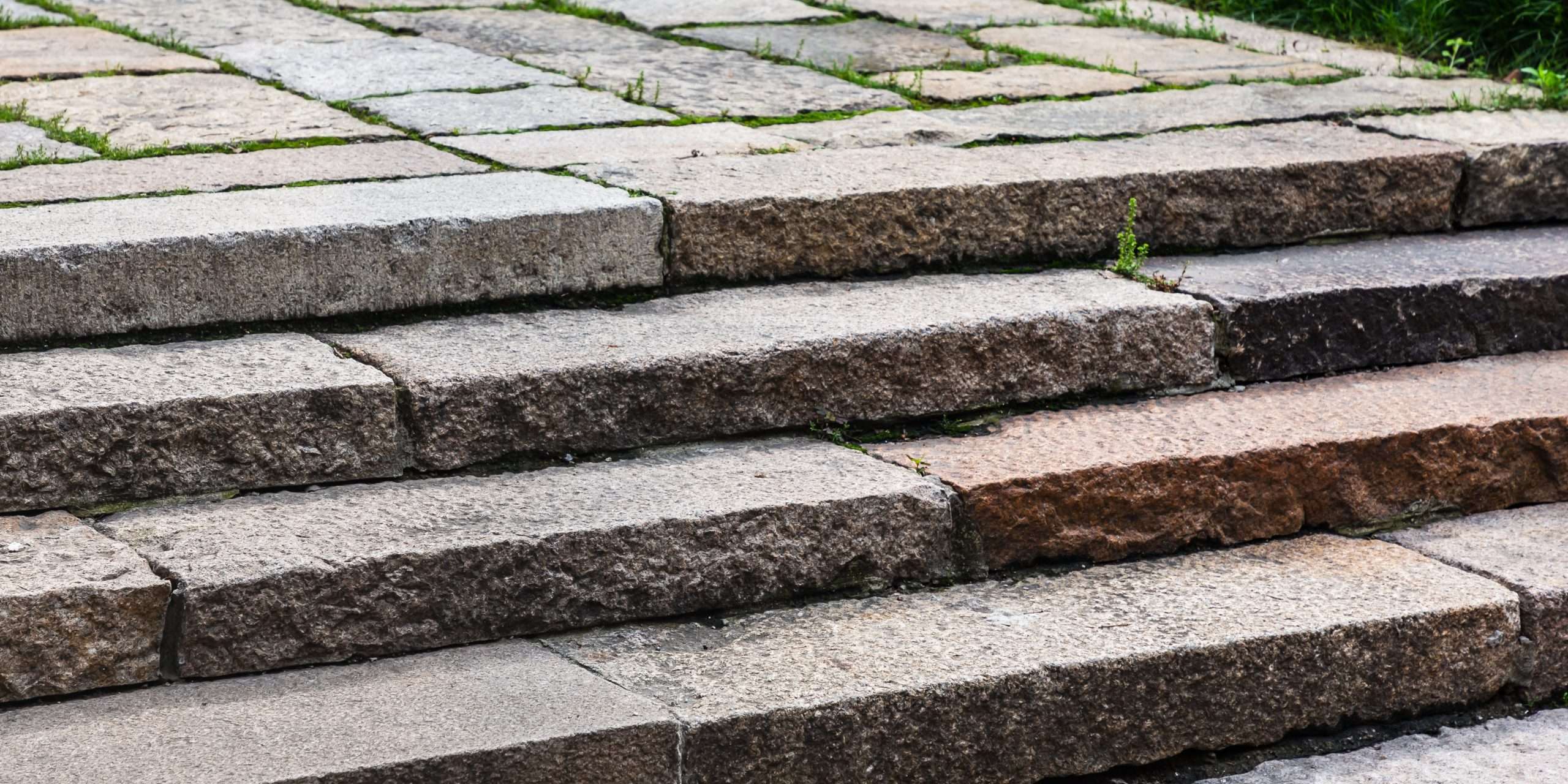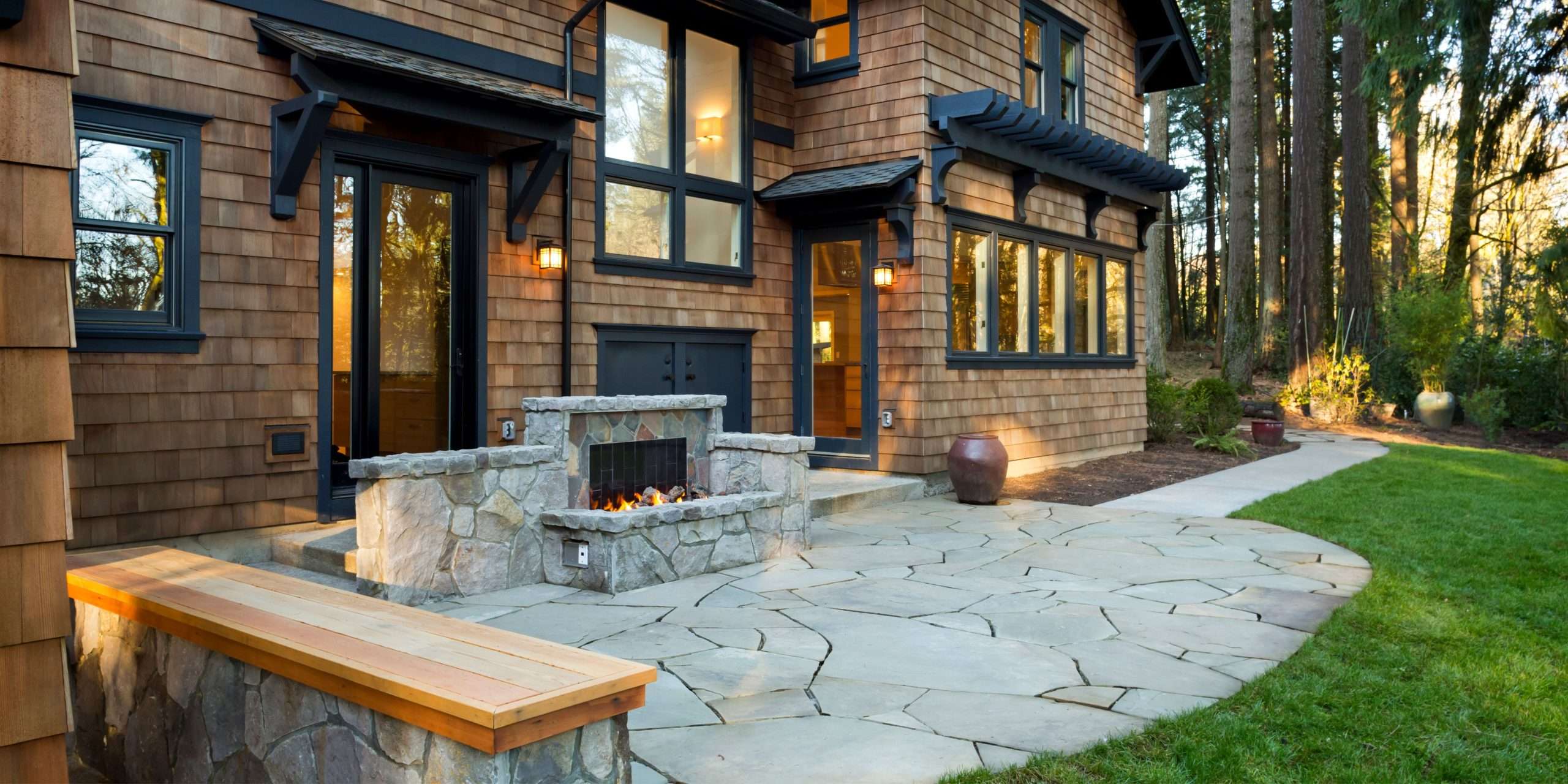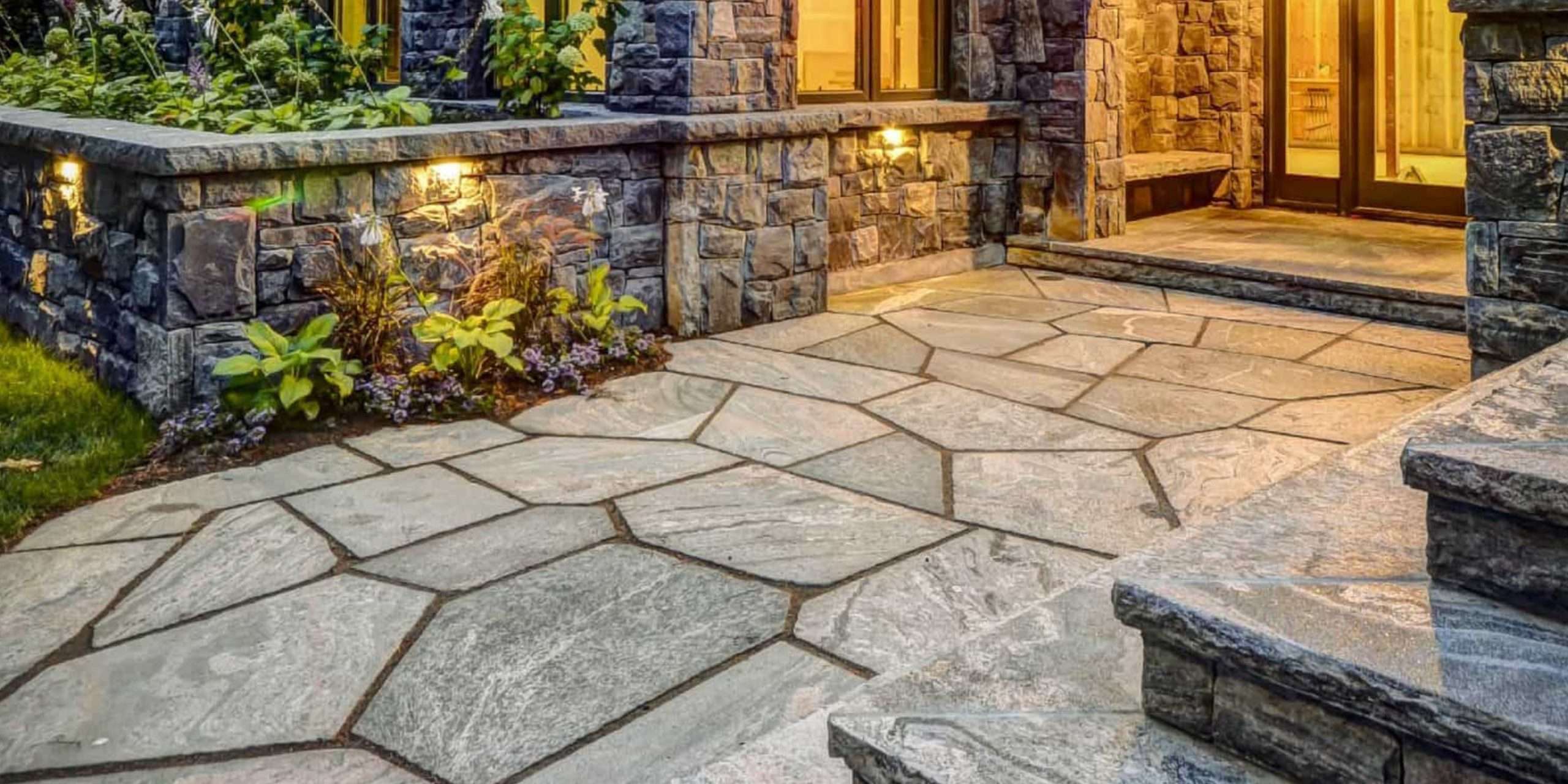No two flagstones are alike, just like no two snowflakes. Flagstone, as a true natural product, comes in a million different shapes, sizes, and colors depending on where it comes from. This incredible variety enables homeowners like you to create truly unique hardscapes.
Different flagstones, however, are not only visually distinct. They also differ in thickness, texture, permeability, and application. These hardy, versatile unsung heroes of landscaping can be found in almost any hardscape you can imagine.
We’ve come up with five flagstone ideas for your yard to help you narrow down your options.
What is flagstone?
Natural flagstone is sedimentary rock that has been broken down into layers and is used for landscaping. There are many different types of flagstone, each with their own distinct characteristics. Sandstone, quartzite, bluestone, and limestone are some popular types.
The majority of flagstones are one of two shapes:
- Rectangles of various sizes with straight edges and clean lines should be cut out of paver stones.
- Irregular, roughly round stones used for “crazy paving,” which entails assembling those chaotic shapes for a casual, natural appearance.
Flagstones can be laid dry on a bed of sand or gravel (“dry-laid”) or wet-laid (“wet-laid”) in either shape. If you’re using thinner flagstones, it’s a good idea to set them in concrete because they can crack when laid dry.

5 Ways to Use Flagstone in Your Landscaping
Now that we’ve covered the basics of flagstone, let’s move on to our eight design ideas for using it into your landscape.
Design an interesting flagstone patio
- You can design your own patio with flagstones to match any home or landscape style. For a more formal look, use geometric shapes like those shown above, or irregular flagstones if you have a more eccentric flagstone patio idea.
- Because of their rough texture, flagstones are ideal for high-traffic areas such as patios.
- By adding some patio furniture and a pergola or other cover, you can easily transform your flagstone patio into an outdoor living space.

A flagstone walkway serves as a guide for guests
- Flagstone walkway designs are only limited by your imagination. Use irregular flagstones interspersed with grass or ground cover plants to create a storybook forest path winding through your garden.
- If you frequently have small children, elderly relatives, or other tripping-prone visitors, you can install a smooth, straight sidewalk made of flagstone pavers instead.
- Flagstone pathways, like flagstone patios, are naturally slip-resistant due to the texture of the stone, so you won’t have to worry about your paths becoming slick with rainwater.

Use stepping stones in inventive ways
- Place your flagstones several inches apart to create stepping stones, and then fill the spaces with pea gravel, river rock, or ground cover plants to prevent weed growth. For a more contemporary appearance like this one, use pavers; for a cottage-style garden path, use irregular flagstones.
- Since you need to use less stone to cover the same amount of ground, stepping stones are usually less expensive to lay than traditional paths. Stepping stones are not only more affordable but also more imaginative and daring.

Build a retaining wall out of flagstones
- Though flagstones are not commonly used as retaining wall stone, they are an option. You can use flagstones to build a low wall in your garden. Just don’t try to stack them too high.
- When building a retaining wall with flagstones, you can stack them dry or use mortar to keep them together. You should definitely consider using mortar for a stronger, longer-lasting wall (even if it will increase the cost of your project).

Use a fire pit to turn a space into a cozy hangout at night
Consider using flagstones to build a rustic outdoor living area if you’re planning to build a fire pit in your backyard. Use contrasting colors for a more striking, edgy design, or use the same type and color of flagstone for the patio/seating area surrounding the fire pit and the fire pit itself for a seamless appearance.



